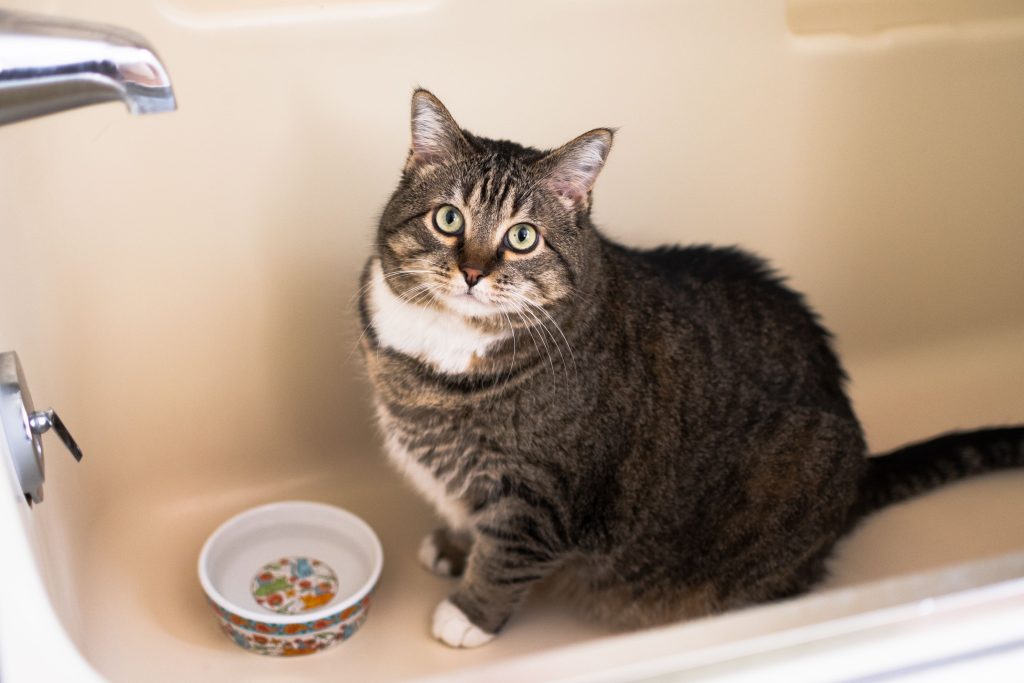Cat sitting in front of water bowl but not drinking may be a sign of potential health issues or stress. This behavior should not be ignored, as dehydration can have serious consequences for cats’ well-being.
Therefore, it is important to observe your cat’s behavior and address any potential underlying causes to ensure their health and hydration needs are met.
Possible Causes For This Behavior
There could be several possible causes for a cat sitting in front of the water bowl but not drinking. One reason could be stress or anxiety, which might be causing the cat to feel uneasy and hesitant about drinking water. Another possibility is underlying medical issues that might be affecting the cat’s appetite and hydration levels. It’s important to consider the cat’s overall health and consult with a veterinarian if this behavior persists. Additionally, some cats may have a preference for running water, finding it more appealing or refreshing compared to still water in a bowl. Providing a cat fountain or a dripping faucet could help encourage them to drink more water. Understanding these potential causes can help cat owners better address their feline companion’s needs and ensure their well-being.
Common Symptoms Of Stress Or Anxiety In Cats
Excessive grooming or scratching, changes in appetite or eating habits, and increased or decreased activity levels are common symptoms of stress or anxiety in cats. Cats who are feeling stressed or anxious may lick, bite or groom themselves excessively, leading to hair loss, skin irritation, or even wounds. Consequently, some cats may also experience changes in their appetite. While some may suddenly lose interest in food, others may start eating more than usual. Additionally, changes in activity levels are another telltale sign of stress or anxiety. Some cats may become more active and restless, while others may become lethargic and withdraw from their usual activities. It is important for cat owners to monitor their pets for these behaviors and provide appropriate care and attention to help alleviate their stress or anxiety.
Common Health Problems That May Affect A Cat’s Drinking Behavior
Common health problems can contribute to a cat’s unusual drinking behavior, including dental problems, urinary tract infections, and kidney disease. Dental problems such as gum disease, tooth decay, or oral pain can make it difficult for cats to drink from their water bowls. Cats with urinary tract infections may experience discomfort while urinating, leading them to avoid drinking water. Kidney disease affects a cat’s ability to filter waste products from its blood, causing dehydration and a decreased urge to drink. If your cat is sitting in front of the water bowl but not drinking, it is important to watch out for any accompanying symptoms such as bad breath, excessive urination or difficulty urinating, weight loss, or lethargy. Consulting with a veterinarian will help identify and address the underlying health issue affecting your cat’s drinking behavior.

Credit: mashable.com
Tips To Make Drinking Water More Appealing
One simple way to encourage your cat to drink more water is to provide fresh water in clean bowls. Cats are known for their cleanliness, and having a fresh and clean water source is important to them. Make sure to wash the bowls regularly and refill them with fresh water to maintain its appeal.
Another option to consider is trying a cat water fountain. Cats are instinctively attracted to running water, and a fountain can stimulate their interest in drinking. The flowing water also helps to keep the water oxygenated and fresh, making it more enticing for your feline friend.
Offering wet food to your cat can also increase their water intake. Wet food typically contains a higher moisture content compared to dry kibble, providing hydration in addition to their regular water consumption. This can be an effective way to supplement your cat’s water intake, especially if they prefer wet food.
Conclusion
If you notice your cat sitting in front of their water bowl but not drinking, it could be a sign of an underlying issue. It’s important to investigate the possible reasons and address them accordingly. Make sure the water is clean, fresh, and easily accessible to encourage your cat to drink.
Furthermore, consulting with a veterinarian is recommended to rule out any potential health concerns and ensure your cat’s well-being. Remember, providing proper hydration is essential for your feline friend’s overall health.


